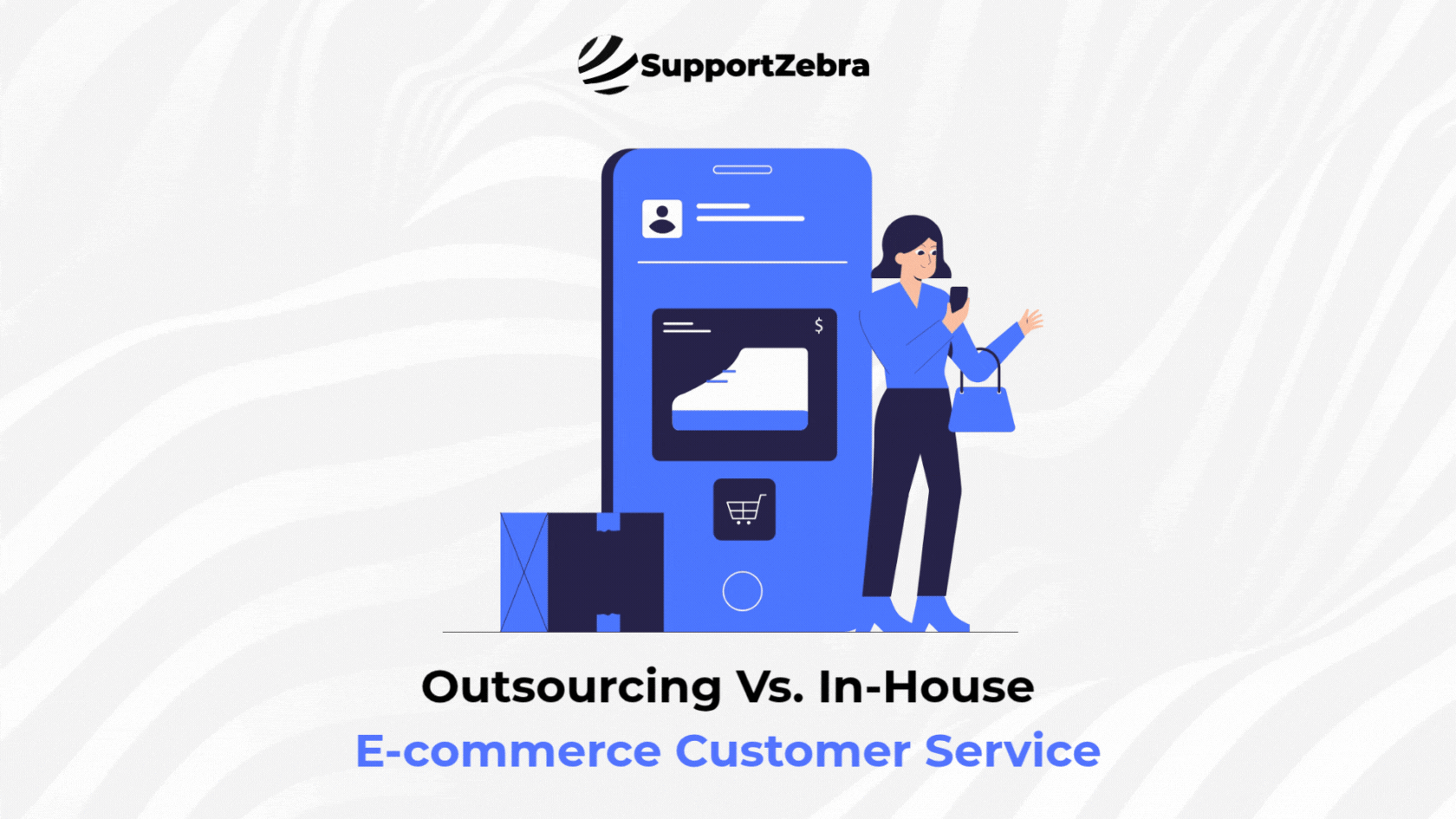How Does Outsourcing E-Commerce Customer Service Compare to In-House Solutions?
Key Takeaways:
- Outsourcing e-commerce customer service offers cost savings, flexibility, and access to expert support.
- In-house teams offer better control, deeper product knowledge, and more personalized service.
- Outsourcing may face challenges such as communication issues and limited brand alignment, whereas in-house teams face higher costs and scaling difficulties.
- Choosing the right solution depends on your business goals, budget, and the level of control you want over the customer experience.
Have you considered whether outsourcing or handling customer service in-house is the better option for your e-commerce business? Each choice has advantages and disadvantages. Outsourcing can save you money and provide flexibility, while keeping customer service in-house allows for greater control and a stronger connection to your brand.
Let’s explore how each option affects efficiency, customer satisfaction, and overall business performance so you can decide what works best for your objectives.
Outsourcing E-commerce Customer Service
Outsourcing customer service can be a strategic approach to enhancing efficiency and customer satisfaction in e-commerce. Here’s what you need to know about its benefits, potential challenges, and how to choose the right partner.
Benefits of Outsourcing Customer Service
- Cost Reduction
Outsourcing transforms fixed costs into variable ones, enabling you to utilize your resources more efficiently and reduce expenses without compromising quality.
- Expertise Access
Working with outsourcing companies provides you with skilled customer service experts who are adept at managing complicated interactions using the latest tools and techniques.
- Flexibility
If you need to increase customer support during busy periods, outsourcing enables you to easily adjust your operations to match demand while keeping expenses manageable.
Potential Drawbacks of Outsourcing
- Communication Issues
Outsourcing can lead to misunderstandings due to time zone differences, language barriers, and cultural variations, which can potentially lower service quality.
- Limited Control Over Customer Experience
Relying on external teams can hinder the consistent quality and clarity of the brand message, negatively impacting customer perception.
- Knowledge Gaps in Products
External teams may lack in-depth product knowledge compared to in-house staff, resulting in slower problem resolution and decreased customer satisfaction.
Tips for Selecting a Reliable Outsourcing Partner
- Assess Experience and Skills
Select a provider with a proven track record of excellent e-commerce customer service. Review their past performance, client feedback, and work samples to ensure they meet your needs.
- Evaluate Communication Abilities
Ensure the team has strong language skills and can communicate professionally with your customers.
- Take Cultural Compatibility into Account
Select a partner that aligns with your brand values and understands your target audience to foster better collaboration and enhance customer experiences.
- Ask for a Trial Period
Request a trial phase to evaluate their service quality before committing to a long-term agreement.
- Ensure Strong Training Programs
Confirm that they provide thorough training, focusing on product knowledge and best practices in customer service. Well-trained staff are essential for high-quality support.
In-House E-commerce Customer Service

An internal e-commerce customer service team provides unique benefits that can significantly improve a company’s customer relationships and brand reputation. Let’s examine the advantages, challenges, and strategies for managing an in-house customer service department.
Advantages of In-House Customer Service
- Better Control of Customer Experience
An internal team ensures customer interactions align with company values and maintain consistency.
- Better Product Knowledge
Internal staff possess in-depth product knowledge, enabling faster and more accurate support, enhanced by collaboration with other departments.
- Tailored Assistance
In-house representatives can offer personalized service by connecting with management and other teams to address complex issues.
Challenges of Maintaining an In-House Customer Service Team
- Increased Costs
Small businesses can find in-house customer service teams costly due to salaries, benefits, office space, equipment, and ongoing training.
- Ongoing Training Requirements
Regular training is necessary to keep the team updated, but it can raise costs, take time, and lead to talent loss.
- Difficulties in Expansion
Expanding an in-house team is a resource-intensive process, making it challenging to maintain service quality during peak periods.
Strategies for Building and Managing an Effective In-House Customer Service Team
- Focus on Training Programs
Invest in comprehensive training to maintain high service quality as your business grows.
- Foster a Positive Work Environment
To reduce turnover, create a supportive culture that encourages teamwork, open communication, and employee recognition.
- Utilize Customer Feedback
Regularly gather and analyze customer feedback to identify areas for improvement and enhance overall satisfaction.
- Adopt Technology
Implement tools such as live chat, ticketing systems, and CRM software to streamline communication and enhance efficiency.
- Promote Team Collaboration
Encourage collaboration among customer service, marketing, and sales to enhance product knowledge and align company goals.
Outsourcing vs. In-House Customer Service for E-Commerce
At SupportZebra, we specialize in delivering exceptional outsourced customer support tailored for e-commerce businesses. Our seamless integration with your in-house teams significantly enhances your customer service operations. With our extensive experience and commitment to quality, we offer a range of customized services, including voice calls, live chat, and email support, all tailored to meet the unique needs of e-commerce.
Our collaborative approach enables you to maintain brand control while leveraging our expertise and technology. By alleviating the burden on your internal resources, we ensure consistent, high-quality support that enhances customer satisfaction and loyalty.
Ready to improve your e-commerce customer support? Contact SupportZebra today, and let us boost your customer service experience.

